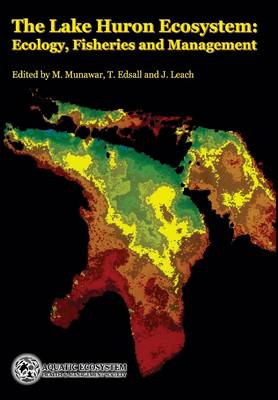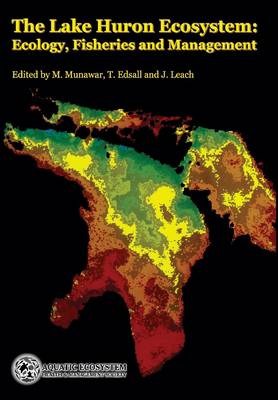
Je cadeautjes zeker op tijd in huis hebben voor de feestdagen? Kom langs in onze winkels en vind het perfecte geschenk!
- Afhalen na 1 uur in een winkel met voorraad
- Gratis thuislevering in België vanaf € 30
- Ruim aanbod met 7 miljoen producten
Je cadeautjes zeker op tijd in huis hebben voor de feestdagen? Kom langs in onze winkels en vind het perfecte geschenk!
- Afhalen na 1 uur in een winkel met voorraad
- Gratis thuislevering in België vanaf € 30
- Ruim aanbod met 7 miljoen producten
Zoeken
The Lake Huron Ecosystem
Ecology, Fisheries and Management
€ 87,95
+ 175 punten
Omschrijving
Lake Huron is the second largest of the Great Lakes and the fifth largest lake in the world (surface area: 59,000 km2). It is also one of the least known lakes in the Great Lakes system in terms of limnology and food web dynamics. To rectify this, the Aquatic Ecosystem Health and Management Society organized an international symposium in September 1993, which they followed with the publication of this peer-reviewed book. In total, forty-five papers were presented during the conference on topics ranging from microbial ecology, the role of exotic species, and sediment toxicology, to fisheries and wildlife of Lake Huron and its basin. With few existing comprehensive reports on the limnology and fisheries of Lake Huron, this detailed book helps bridge the information gap by introducing a multidisciplinary and ecosystematic approach to Great Lake (particularly Lake Huron) research.
Specificaties
Betrokkenen
- Uitgeverij:
Inhoud
- Aantal bladzijden:
- 497
- Taal:
- Engels
- Reeks:
Eigenschappen
- Productcode (EAN):
- 9780992100735
- Verschijningsdatum:
- 1/07/1995
- Uitvoering:
- Paperback
- Formaat:
- Trade paperback (VS)
- Afmetingen:
- 165 mm x 241 mm
- Gewicht:
- 934 g

Alleen bij Standaard Boekhandel
+ 175 punten op je klantenkaart van Standaard Boekhandel
Beoordelingen
We publiceren alleen reviews die voldoen aan de voorwaarden voor reviews. Bekijk onze voorwaarden voor reviews.








